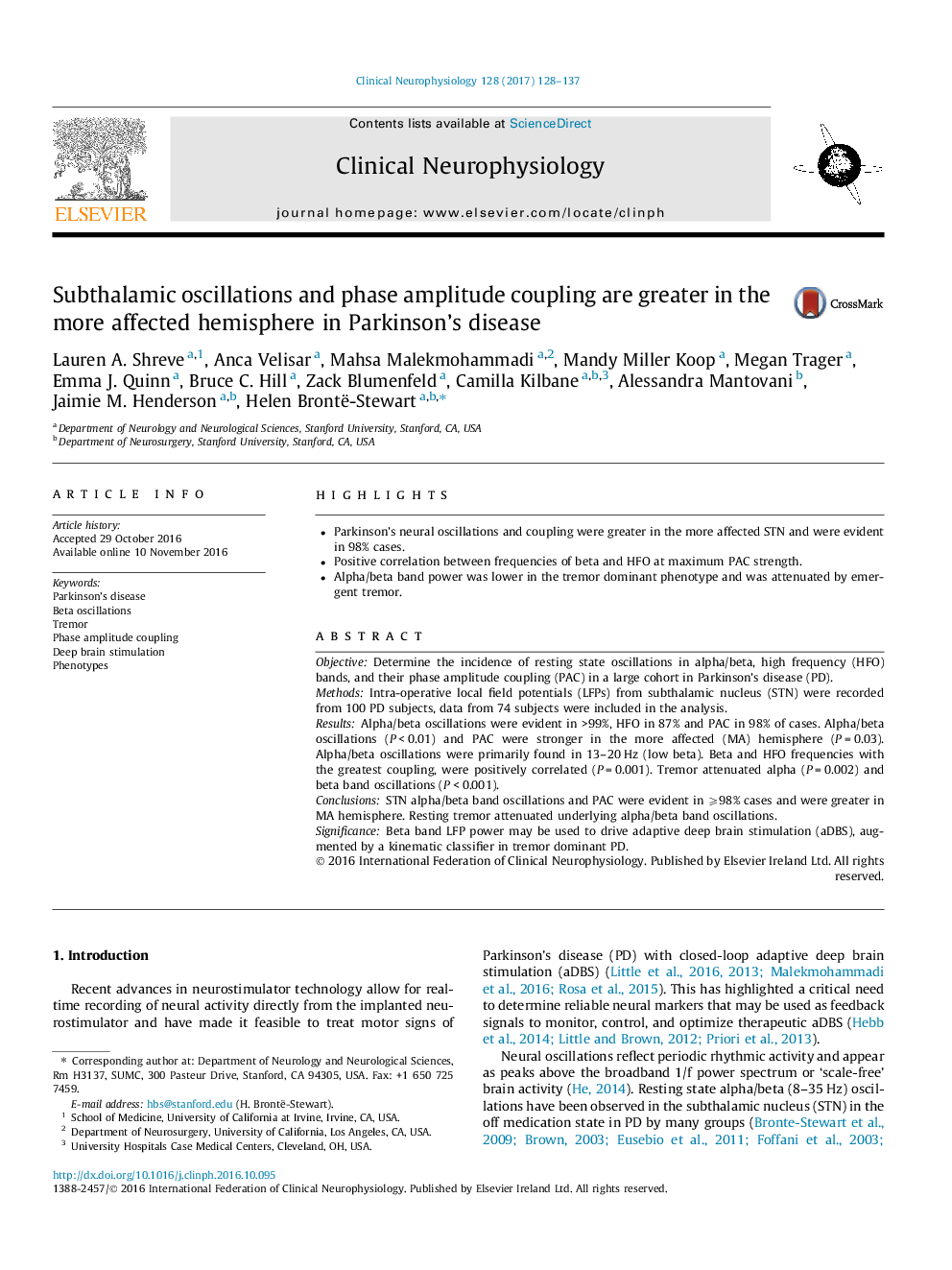| Article ID | Journal | Published Year | Pages | File Type |
|---|---|---|---|---|
| 5627448 | Clinical Neurophysiology | 2017 | 10 Pages |
â¢Parkinson's neural oscillations and coupling were greater in the more affected STN and were evident in 98% cases.â¢Positive correlation between frequencies of beta and HFO at maximum PAC strength.â¢Alpha/beta band power was lower in the tremor dominant phenotype and was attenuated by emergent tremor.
ObjectiveDetermine the incidence of resting state oscillations in alpha/beta, high frequency (HFO) bands, and their phase amplitude coupling (PAC) in a large cohort in Parkinson's disease (PD).MethodsIntra-operative local field potentials (LFPs) from subthalamic nucleus (STN) were recorded from 100 PD subjects, data from 74 subjects were included in the analysis.ResultsAlpha/beta oscillations were evident in >99%, HFO in 87% and PAC in 98% of cases. Alpha/beta oscillations (P < 0.01) and PAC were stronger in the more affected (MA) hemisphere (P = 0.03). Alpha/beta oscillations were primarily found in 13-20 Hz (low beta). Beta and HFO frequencies with the greatest coupling, were positively correlated (P = 0.001). Tremor attenuated alpha (P = 0.002) and beta band oscillations (P < 0.001).ConclusionsSTN alpha/beta band oscillations and PAC were evident in ⩾98% cases and were greater in MA hemisphere. Resting tremor attenuated underlying alpha/beta band oscillations.SignificanceBeta band LFP power may be used to drive adaptive deep brain stimulation (aDBS), augmented by a kinematic classifier in tremor dominant PD.
